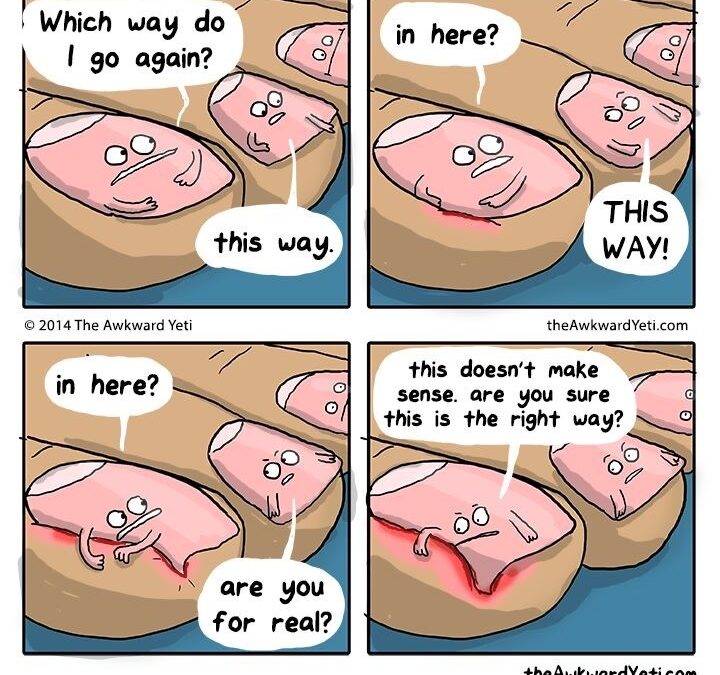Few foot conditions cause as much pain as the infamous ingrown toenail. For such a seemingly little thing, the pain can be unbearable. The simple act of putting on a sock, or the miniscule weight of the bed sheet can make anyone suffering from this condition cringe in agony. However, pain is not the only drawback of this often-recurrent condition. Infection typically goes hand-in-hand with the ingrown nail, termed “onychocryptosis”, and depending on your overall health, this can be a dangerous occurrence.
Ingrown nails are caused by a portion of the edge of the toenail penetrating the sensitive skin surrounding it. A wound develops and, if left untreated, the nail continues to grow ever so slowly into the wound. The inflammation and subsequent infection causes the skin to swell, which further forces the nail deeper into the flesh. This process can be caused by the shape of your nail that you’ve inherited, ill-fitting footwear, socks, or compression stockings, trauma, or most commonly, improper nail cutting.
From an evolutionary perspective, it is thought that the plethora of nerve endings around the toes and toenails developed to remind us to be very, very careful with our feet. We needed our bare feet to carry us around on the hunt for food, and since footwear, soap, and antibiotics were not readily available to our caveman ancestors, this was the best way to protect against potentially life threatening infections on our constantly dirty, germ-infested feet. Infections in your toenails may also lead to growth of toenail fungus.
Once an ingrown nail has been diagnosed, it is generally simple to treat. A local anesthetic injection can help ease your pain, but it is often not necessary. A chiropodist will gently remove the offending piece of nail from the skin, clean and dress the wound, and instruct you on proper care of the area.
Recurrent ingrown toenails can be treated permanently with a minor surgical procedure called a “nail avulsion”. This involves a removal of the offending portion of the nail (under local anesthetic), or in rare cases the entire toe nail, and application of a special chemical that will prevent regrowth of the portion that was removed. Following this procedure, the ingrown nail cannot recur.
Before you seek, or can obtain, professional help from a chiropodist, warm salt footbaths and application of a topical antibiotic ointment and bandage can ease your discomfort and control the infection. Those who suffer from diabetes, or any condition that results in a compromised immune system, should seek medical attention immediately as an infected ingrown nail can quickly cause a limb or life-threatening situation.
If you think you may be developing, or know that you have, an ingrown toenail, seeing a chiropodist at We-Fix-U is your best bet for resolution. A chiropodist in Oshawa will expertly assess the cause, treat the situation, and instruct you on the best way to prevent this very painful foot condition from ever occurring again.







